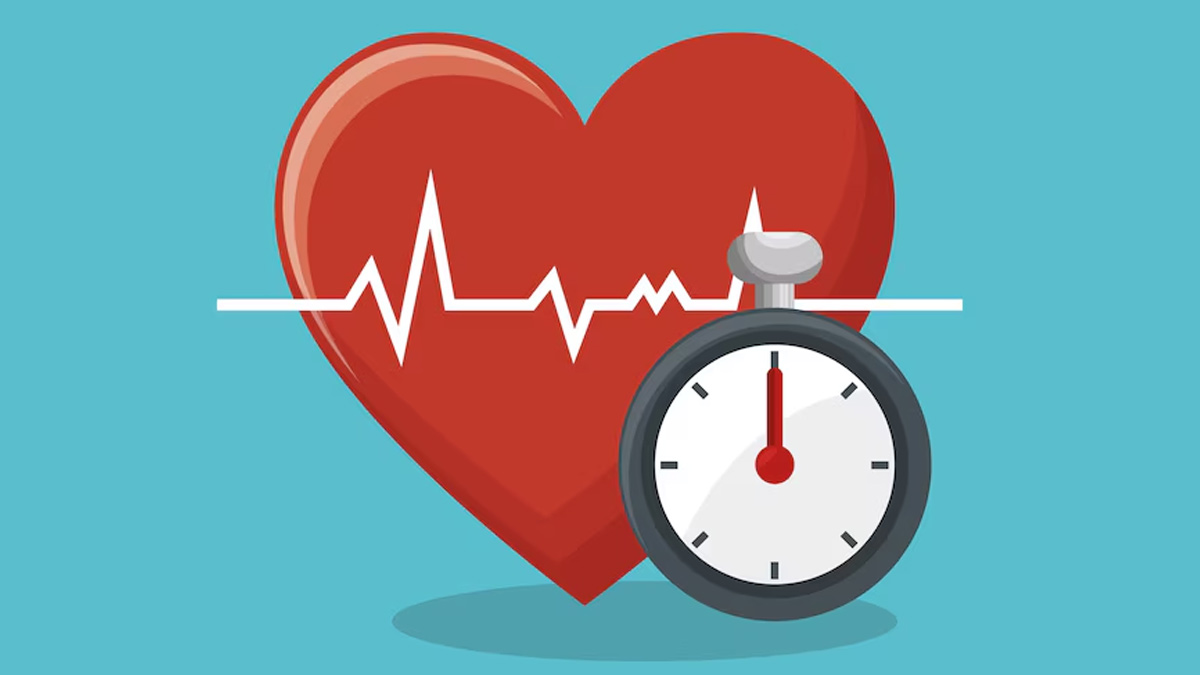
Place the tips of your first two fingers, the index and the middle finger, on the inside of your wrist or slightly below your ear and focus your attention. You will feel a rhythmic 'dub-dub' sensation. This sensation represents your heart rate; which doctors monitor to assess the primary indications of your heart's functionality. A lower resting heart rate usually indicates improved cardiovascular health and more effective cardiac function. Also, during physical activity, your heart rate will increase to meet your body's oxygen needs. To understand more about its variations, we spoke to our expert Dr Lakshmi Navya Cheekatla, Associate Consultant, Cardiology, Manipal Hospitals, Vijayawada, who explained heart rate and factors affecting it.
What Is Heart Rate?

“Heart rate, also known as pulse rate, is the number of times your heart beats per minute. It is typically measured when you are resting and relaxed. The rate measured during this state is the resting heart rate, which indicates the minimal amount of blood your heart pumps to meet your body's needs at rest”, said Dr Cheekatla.
The resting heart rate ranges between 60-100 Beats Per Minute (bpm), but it varies among individuals based on factors, such as age, emotions, activity levels, and the effects of medication. For instance, athletes often have a resting heart rate of around 40 bpm, which is normal for them due to their high level of physical fitness. On the other hand, babies and children tend to have a much higher resting heart rate, exceeding 100 bpm.
Also Read: Heart Attack Or Anxiety? What Does An Increased Heart Rate Means
Variations Of Heart Rate

Here are some scenarios that can cause minor variations in the resting heart rate, as listed by the expert
- Exposure to higher temperatures increases the heart rate
- Pain triggers a stress response in the body, causing the heart rate to increase.
- Heart rate can be lowered by certain medications, such as beta-blockers.
- Feelings of anxiety or excitement increase heart rate.
- In obese individuals, the heart has to work harder to supply blood to the additional body mass, resulting in a higher heart rate.
- In anaemia, due to a lesser number of red blood cells, the heart beats faster to circulate more oxygen-rich blood throughout the body.
- Abnormal hormonal levels can influence heart rate. In hypothyroidism, where there is insufficient production of thyroid hormone, the heart rate is lower.
- Standing up after sitting can temporarily increase the heart rate. This increase is even more exacerbated and abnormal in a condition called postural tachycardia syndrome.
- Increased heart rate is common in individuals who smoke.
“While minor variations in resting heart rate are normal, there are times when the baseline rhythm becomes abnormally fast or slow. When the heart rate exceeds 100 beats bpm, it is called tachycardia. Tachycardia can occur due to conditions, such as anaemia, congenital heart disease, hyperthyroidism, or ventricular arrhythmias. Conversely, bradycardia refers to a heart rate below 60 bpm. Bradycardia can result from side effects of certain medications, electrolyte imbalances, or obstructive sleep apnoea”, added Dr Cheekatla.
According to the Canadian Journal of Cardiology, elevated heart rate not only elevates the demand for oxygen in the heart muscle but also poses a risk of compromising oxygen supply due to decreased collateral perfusion pressure and flow. This imbalance can lead to conditions, such as ischemia, arrhythmias, and ventricular dysfunction, and may precipitate acute coronary syndromes, heart failure, or sudden death.
Also Read: Heart Disease Running In Your Family? Expert Shares Dos And Don'ts That You Should Follow
When To Visit A Doctor?

“Your underlying health conditions often determine what counts as a dangerous heart rate. If you have heart disease, heart failure, or a history of heart issues, pay close attention to any fluctuations in your heart rate. A changing heart rhythm could be signalling a serious complication”, highlighted Dr Cheekatla.
You should also consider visiting your doctor if your resting heart rate consistently exceeds 100 bpm or drops below 60 bpm accompanied by symptoms like:
- Shortness of breath
- Tightness in the chest
- Pain
- Heart palpitations or flutters
- Dizziness or light-headedness
- Fainting
Bottomline
Dr Cheekatla concluded, “Since the heart rate indicates our heart function, knowing about this essential organ enables us to take better care of it. Exercising regularly, eating heart-healthy foods, reducing smoking, reducing caffeine and alcohol intake, managing stress, and getting regular health check-ups can help maintain a healthy heart.”
[Disclaimer: This article contains information provided by the expert and is for informational purposes only. Hence, we advise you to consult your expert if you notice any health complications to get the necessary treatment.]
Also watch this video
How we keep this article up to date:
We work with experts and keep a close eye on the latest in health and wellness. Whenever there is a new research or helpful information, we update our articles with accurate and useful advice.
Current Version